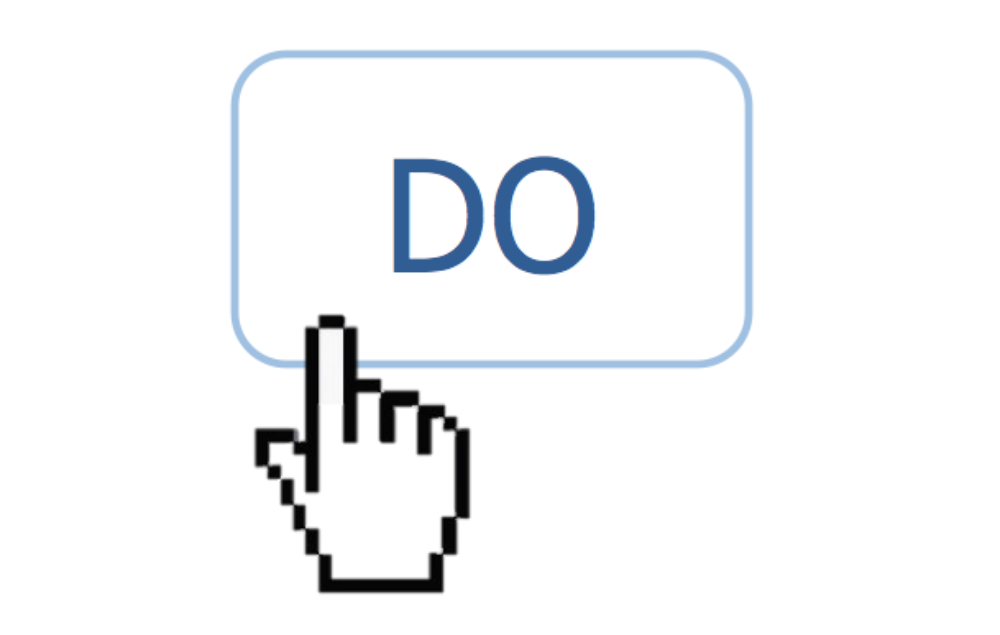
I’m a great fan of Sasha Dichter’s: of his work at Acumen, where he’s Chief Innovation Officer and I’m a longtime advisor, and of his blog reflecting on fundraising, non-profit organizations and the practice of leading a life of impact. It’s Sasha’s birthday today, and I can’t imagine a more fitting “present” given Sasha’s value system than to engage in depth with Sasha’s most recent post, “The missing Do button.”
Sasha poses a question important to all of us. To excerpt from his blog:
It’s easier than ever to discover great new ideas. But I wonder how much better we’re getting at taking meaningful action based on the whirlwind of new ideas we’re now able to find.
How often do we receive a link to a great thought piece, read it (view it), get all jazzed up and then (wait for it…) forward it to a friend or tweet it?…
What’s the action I’m committing to? What am I going to do differently as the result of coming across work that should change my thinking and my behavior? If all I do is share, the implication, at best, is that I’m hoping that someone else is more willing to act on something than I am…
I fantasize about a Do button at the bottom of every article and viral video…. [generating what] I am going to do with this new thinking, with who, by when. The button helps us shift from “hey, this is interesting” to “this is what we’re going to do.”
The bottom line is that we are letting ourselves off the hook, and, in so doing, we’re not doing right by the people whose thinking we so deeply respect. The truth is, these people aren’t interested in being a little bit famous; they’re interested in making something happen. The best way to honor them is through the actions you take.
The question got under my skin: what would count as a “do button” and what would it look like to learn to build such a button for oneself or for the use of others?
When we encounter “great new ideas” of any kind, the very first thing that happens in our minds is a shift from “this has my attention” to “this matters to me.” The do button effects a transmission from “this matters” to a realized action. This transmission requires multiple gears to work in concert. I believe we might best think of six distinct gears making up the button’s core machine (debt acknowledged to David Allen, whose readers will recognize his imprint here).
- Capturing the “this matters” as a question that requires future reflection and decision
- Taking a stance toward the idea – what kind of action is merited?
- Deciding the specific action to take
- Placing this planned action into a clear “when, where and how”
- Following through and doing the specific action
- Connecting the action back up to the broader idea, either to move back through these six steps – or to release oneself from the commitment to act further
When we encounter a great idea, tweet it and then let it go, we’re compressing the first five steps into one little burst of 140 characters or fewer and omitting the sixth step entirely. The gears don’t connect to anything that way.
Contrast this with Sasha’s own “generosity experiment,” which he described in one of his best blog entries and in a talk featured on TED’s “best of the web.” Sasha has an insight, soon after the routine morning event of not giving to a stranger on the subway, that “Giving is an act of self-expression, and generosity is a practice. Each time I decide not to give, I’m reinforcing a way of acting – one that’s critical and analytical and judgmental.” Probably most of us have thoughts like this from time to time, if perhaps rarely as beautifully formulated as Sasha’s restatement here. (Almost certainly, Sasha’s formulation at the time wasn’t so beautifully precise and compact either.) How often do such thoughts simply float away?
In this case, though, Sasha moves through the six steps outlined above. First, he flags that his thought matters. He stays with it long enough – or comes back to it deliberately enough – to progress to the second step: deciding what stance to take, what kind of action is merited. As he opens himself up to this question, he makes a beautiful leap. The stance isn’t a single action, even a grand one. It is a practice of generosity. But what kind of practice? With what focus? For how long? This is the domain of the third step, translating a general intention into a specific path of action. Sasha resolves to begin a “Generosity experiment: for a period of time, when I’m asked to give, to say yes. To everything. To emails and people on the street and friends raising money. Everyone.”
Sasha could simply treat that as the fourth step. He’s decided to implement a kind of rule of action – saying yes – in a very clear context (whenever he’s asked). But he doesn’t rush over the fourth step. He pauses and he makes a specific and important decision about his first action. It’s September 9, 2009. He writes his post about the Generosity Experiment, and in doing so not only sets his idea into broader motion but ties himself to the mast with a public commitment of what he’s about to do. And which he does, and does and does. He owns his experiment; he plays it out.
But much as the doing mattered, and it wasn’t the doing alone that mattered most. He took the sixth step, and connected the doing back up to his original idea. What is the practice of generosity? What does that practice enable us to become? He’s been living these questions for years since, within himself and on the largest stages he can find. He now says no sometimes. The experiment had a literal end, but was really a beginning. Hundreds of thousands of people have read Sasha’s blog about the idea, or seen his talk, or heard about his small, radical experiment in ways that have touched their thinking. And Sasha’s experiment has flowed into the rest of his larger work, as a leader at Acumen and as one of the voices most importantly reshaping our understanding of what non-profit development can be, and, more broadly of what it means to give.
These six gears operate as a “do button” in large things and small. If you see a milk carton is almost empty, realize that needs your attention, decide that it’s up to you to restock, resolve to stop by the convenience store on the way home from work, put the errand into your calendar, and actually make the stop on your way home, that’s a trivial example of the first five steps. But if what’s at stake is something larger than needing milk – you’ve looked at your almost-empty bank account and realized that you need to relate to money in a fundamentally different way, or at your eleven-year-old son’s empty bed and realized he’ll only be at home for so many more years and that you’re at risk of not making the most of those years – then whatever path of action you resolve upon and undertake by operating the first five gears is unlikely to add up to the change you want if you don’t take the sixth step and connecting back to a larger imperative that you can’t act on all at once.
This “do button” is most difficult to find and most important to use as the ideas involved become bigger, more abstract and more demanding in the changes they suggest we might make in our lives. I believe that like Sasha’s generosity experiment, the “do button” is a practice. It can be broken down into six steps, and those steps can be turned into habits. Those habits can ultimately filter down so deep that they become the way we are. Sasha shows us something important about what it means to be this way. Happy Birthday, Sasha. Here’s to another year of your grand experiment in learning and teaching your way through the largest human questions: how to do and how to give.



